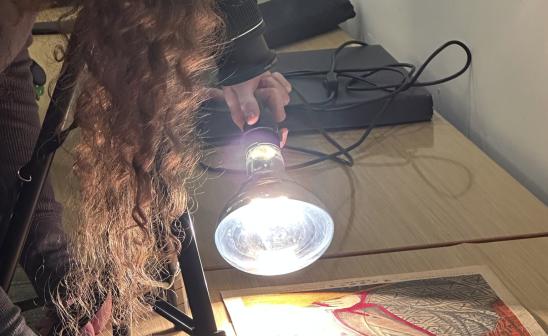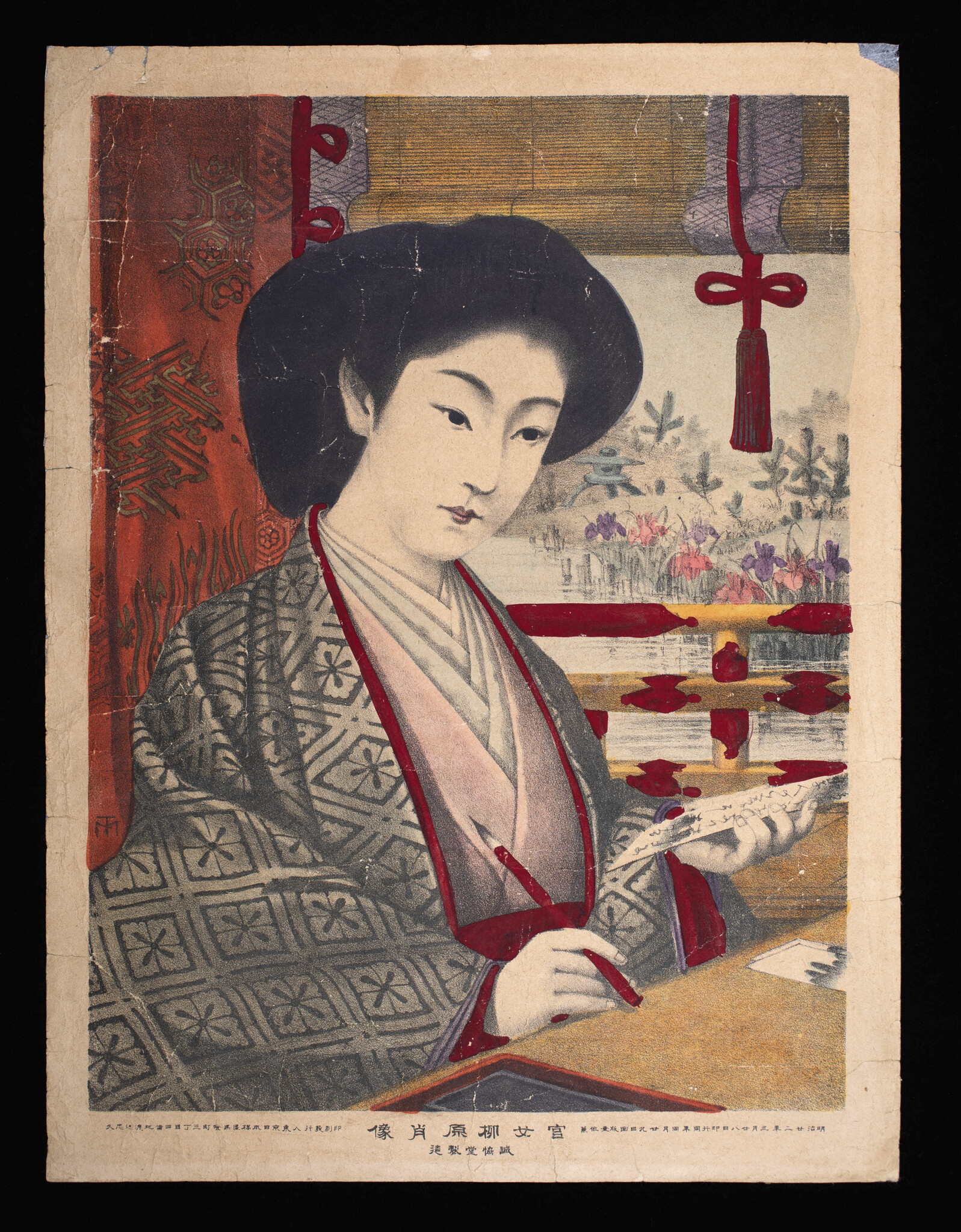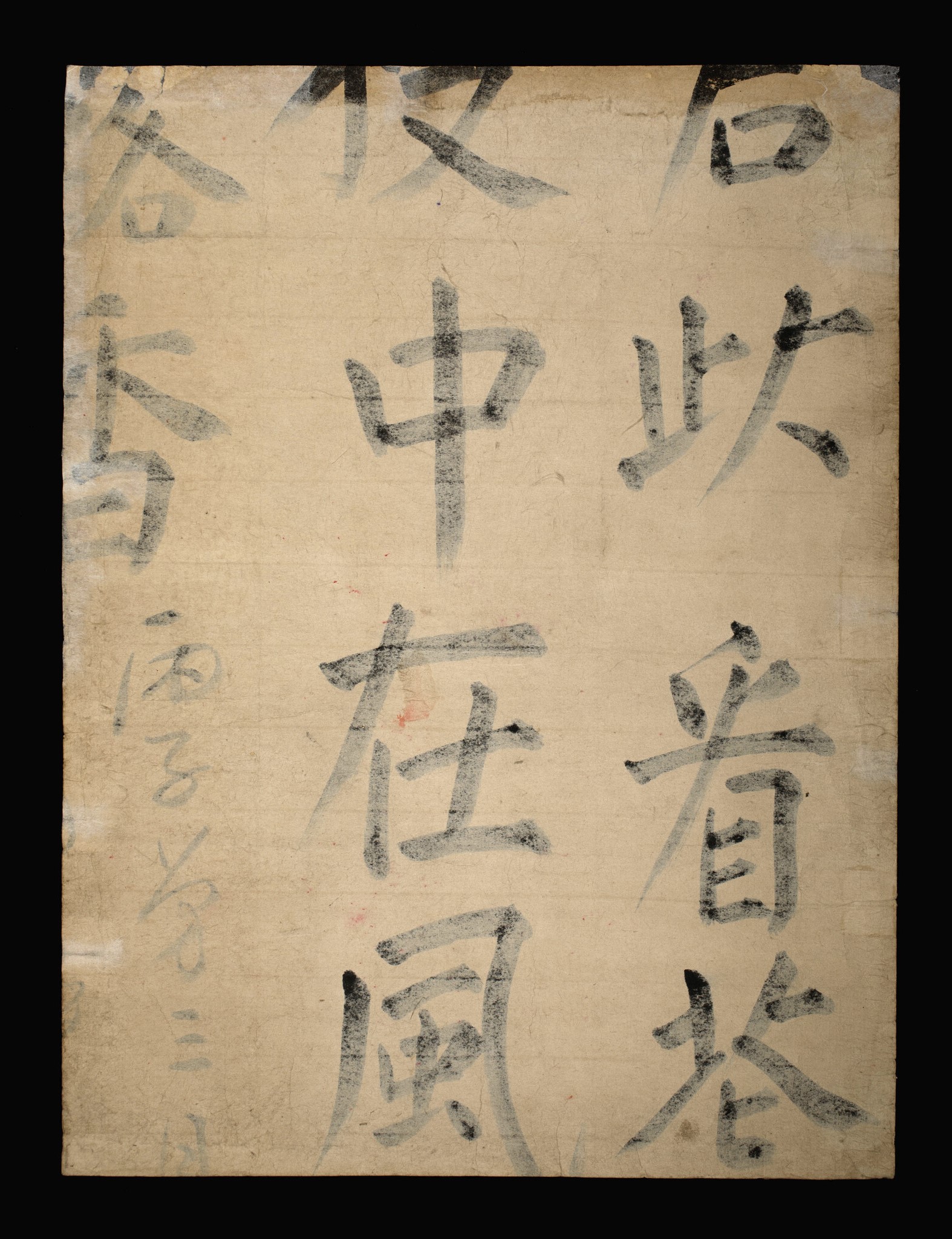CEAS Supports UChicago Liberal Arts in Action: Blending Art, History, and Science

On December 4, 2024, UChicago News published an article on the physical science course, “The Chemistry of Artists’ Materials” taught by Assistant Instructional Professor Hannah Lant to showcase this offering as an innovative, interdisciplinary, and unique learning opportunity at the University of Chicago. The course combined art, history, and chemistry as students explored the science of art materials and conservation techniques in lecture and lab sessions.
In the lab, students looked at an early Meiji-era (1868-1912) Japanese print borrowed from the library’s Visual Resources Center and housed in the Department of Art History. This print was acquired through the faculty research initiatives of Professor Chelsea Foxwell (Art History) supported by the Center for East Asian Studies at the University of Chicago (CEAS). Professor Foxwell also consulted on research articles utilized in the course. The class used lab equipment to investigate the Japanese print’s chemical makeup with the goal of finding its earliest possible date of production, also known as the terminus post quem. (The answer was 1878!)
This print below (bottom right) depicts the court lady Yanagiwara Naruko (1855-1943) inscribing poetry on a tanzaku paper slip, a courtly custom dating back hundreds of years. Lady Yanagisawa was an official concubine of the Meiji Emperor (r. 1868-1912) and in 1879 gave birth to Prince Yoshihito (the future Emperor Taishō, 1879-1926). Official documents and portrayals presented the Meiji Emperor's consort, Empress Shōken, as the mother of the crown prince: consequently, this lithograph makes no mention of Yanagiwara's status as Yoshihito's biological mother. This status is nonetheless hinted at in the pine saplings and irises (hana-shōbu; also known as sweet flags) portrayed in the garden behind her. Because of their sword-like leaves, irises are symbols of the wish that boys will grow into strong warriors, while the young pines express a desire for the prince's longevity.


As an interdisciplinary center, CEAS is pleased to support such innovative classroom instruction that utilizes East Asian resources on campus. To view the complete UChicago News article on “The Chemistry of Artists’ Materials,” click here.
To learn more about the research and teaching interests of CEAS affiliated faculty, click here.
Left image: Verso of above. Calligraphy practice paper was used to line the print in order to increase its durability.
Right image: Watanabe Tadahisa (lithographer), Court Lady Yanagiwara, lithograph with hand coloring, 1889.
 THE UNIVERSITY OF CHICAGO
THE UNIVERSITY OF CHICAGO

